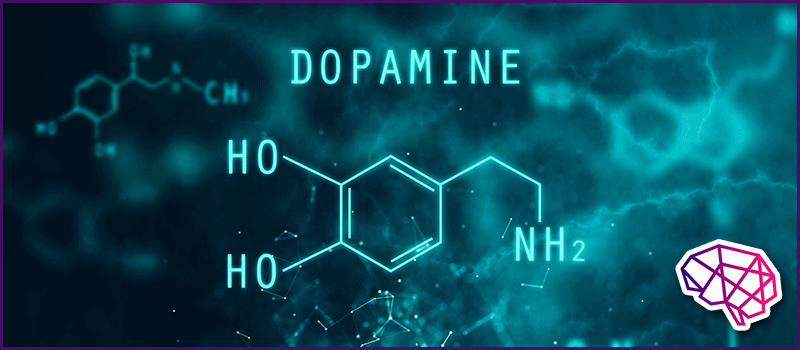
Brain Health: How to Naturally Boost Dopamine
Dopamine is a multi-functioning brain-based chemical messenger, that is involved in a wide array of mechanisms and tasks, such as body movement, attention, memory and motivation1 2.
When released in large quantities, it induces feelings of pleasure, which, in turn, motivates a person to repeat certain behaviours and actions (to elicit the same ‘reward’)3.
On the flip side, however, when levels of dopamine are low, feelings of decreased motivation and lack of enthusiasm (for things and activities that would excite and stimulate the majority of people) are experienced4.
The human body – the brain specifically – is exceptionally proficient at regulating levels of dopamine; however, there are some natural ‘hacks’ that can help to boost levels of dopamine, and in today’s post we will be discussing these and the science behind them in depth.
Natural ‘Hacks’ to Naturally Increase Dopamine Levels
Here are several natural ways to boost dopamine levels:
Consumption of Protein
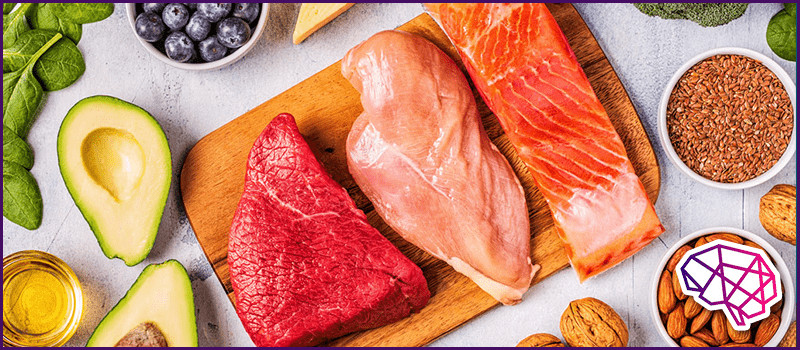
Protein is one of the three primary macronutrients (alongside carbohydrates and fats) and is constructed from smaller building blocks known as amino acids. In total, there are 23 amino acids, some of which can be created by your body (‘non-essential’ amino acids) and some which must be obtained through diet (‘essential’ amino acids). One of these is called tyrosine, and it is this amino acid that plays a crucial role in the body’s production of dopamine.
Specific enzymes exist in the human body that converts tyrosine into dopamine; therefore, have sufficient levels of tyrosine is essential for the production of dopamine. Additionally, tyrosine can also be synthesised from another amino acid – phenylalanine.
Consuming adequate amounts of these amino acids into your diet is easy given that they are found in a plethora of protein-rich foods, such as chicken, beef, eggs, soy, and dairy.
Research has indicated that increasing your consumption of both tyrosine and phenylalanine can increase dopamine production in the brain, which, in turn, may boost memory and deep thinking5. However, studies have also shown that when tyrosine and phenylalanine are removed from the diet, dopamine levels decreased6.
Saturated Fat
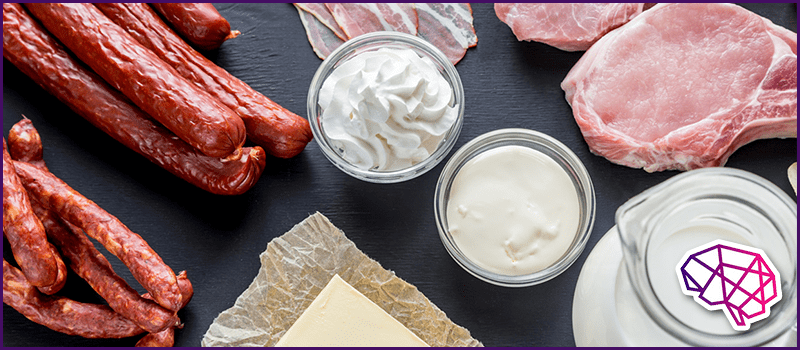
If there’s one food that is synonymous with being unhealthy; it’s saturated fat, but what effect does saturated fat have on dopamine levels and production?
A handful of animal-based studies concluded that when consumed in large quantities, saturated fats in products such as butter, full-fat dairy, coconut oil, and palm oils, might alter dopamine singling in the brain7. Although studies in this area have, at this time, only been conducted on rats, it is certainly interesting given the similarities between rats and human beings.
Let’s take a look at some more scientific research in this area:
– A study published in 2016 found that rats who consumed 50% of their calories from food rich in saturated fat had a decrease in dopamine signalling in the reward centres of the brain, compared to rats consuming the same calorific amount from non-saturated fats8. What also interesting was the fact that these changes in dopamine singling occurred even when no differences in body weight and fat, blood sugar and hormones were observed.
– Researchers have surmised that diets that include high levels of saturated fat may increase the amount of inflammation in the body, which may induce changes to the dopamine system. However, more research is needed in this area9.
– A handful of observational studies have found a correlation between higher intake of saturated fat and poorer cognitive function and memory in humans; however, it’s not clear whether it is related to dopamine at this time10.
Probiotics

Probiotics are an excellent way to boost gut health, but recent research has indicated that they may also be crucial for brain health, too, as the brain and gut are closely linked11. In actual fact, the gut is often referred to as the ‘second brain’ given that it contains a huge number of nerve cables that are involved in the production of neurotransmitters such as dopamine12.
Recent research has indicated that a specific strain of bacteria that resides in the gut also has the ability to produce dopamine, which may affect both overall behaviour and mood13. Although research in this area of science is in its infancy, a few studies have shown that certain species of bacteria – when consumed in high enough quantities – can decrease the symptoms of both depression and anxiety in animals as well as humans14.
Research in this area is clearly promising, but further studies are required to fully understand the correlation between mood, dopamine levels and gut health.
Exercise
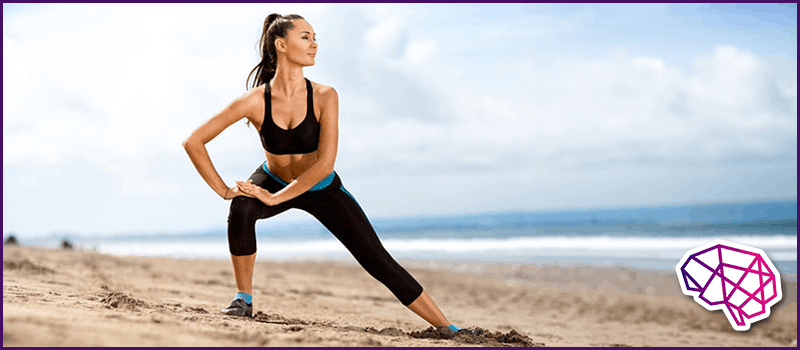
It should come as no surprise to anyone that exercise is on this list. Exercise is by far and away one the healthiest things you can do – but how does it affect dopamine levels and mood?
Research has shown that as little as 10 minutes can enhance mood, but these effects will be magnified if exercise is performed for 20 minutes or longer15. While the positive mental effects induced by exercise and physical activity might not be caused by alterations in dopamine levels, research in animals has shown that exercise can increase dopamine levels16. However, these effects have not yet been consistently seen in humans or consistently replicated in human studies.
For example, a study published in 2000 found that half an hour of moderate-intensity exercise (running on a treadmill) did not increase dopamine17. In contrast, a further study released in 2014 discovered that one hour of yoga every day for six-day had a positive effect on dopamine levels18.
One area that may be relevant to this branch of science is the effect of exercise on those with Parkinson’s diseases. Research has shown that frequent intense exercise has a profoundly positive impact on motor control in those with Parkinson’s, which suggests there might be a positive effect on the dopamine mechanism and system19.
Although further studies are clearly needed, the present research into exercise and dopamine is promising to say the least.
Sleep
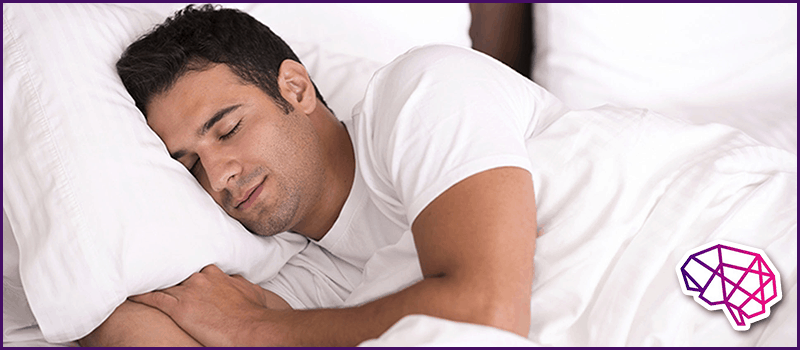
Sleep is another aspect of everyday life that is critical for mental and physical health – but where does dopamine slot into sleep, and how does the latter affect the former?
When dopamine is released, it induces a state of wakefulness and alertness. Research conducted on animals indicates that dopamine is released in high quantities in the morning when it’s time to be awake and alert, with levels then gradually dropping throughout the day, decreasing to its lowest amount just before bed.
However, insufficient sleep appears to impact the natural release of dopamine. Research has shown that when people stay up all night, dopamine receptor availability in the brain is lowered by the following morning20. This makes sense because given that dopamine induces wakefulnesses, decreasing the sensitivity of the receptors, the brain should make falling asleep easier – particularly after an entire night of insomnia.
Unfortunately, however, decreased levels of dopamine may cause several unwanted side effects, such as reduced ability to concentrate and poor coordination21. Therefore, ensuring consistent, high-quality sleep can help to keep your dopamine levels where they should be, i.e. high in the morning and lower in the evening, which will allow you to function optimally throughout the day.
According to the National Sleep Foundation, adults should aim to sleep for between seven and nine hours per night, as well as ensuring proper sleep hygiene22. The latter can be achieved by going to sleep at the same every day, followed by waking up at the same time every day; decreasing noise levels in your bedroom (or wherever you sleep), avoiding caffeinated drinks from mid-afternoon onwards and only using your bed for the purpose of sleep.
Music

Music is one of humankind’s greatest inventions – but did you know it can actually stimulate the release of dopamine in the brain? According to several studies, listening to music increases and enhances activity in both the pleasure and reward regions of the brain – both of which are teeming with dopamine receptors23.
A study published in 2011 examined the impact of music on dopamine levels and found an increase of almost 10% was experienced by people who listened to instrumental music that gave them the chills24.
As music has been shown to boost levels of dopamine, listening to music has been shown to aid those with Parkinson’s disease by improving their motor neurone control25.
At present, all research that has looked into the effect of listening to music on dopamine levels have used instrumental pieces. This is so researchers can be sure that it is the melody and music itself causing the spikes in dopamine, rather than specific lyrics. Further research is needed to examine whether or not music with lyrics has the same, or potentially a greater, impact on dopamine.
Meditate

Meditation has always been associated with improved physical and mental health26, with research suggesting that the myriad of positive health effects induced by meditation are linked to an increase in dopamine levels in the brain.
A study published in 2002 examined dopamine levels in experienced meditation teachers and found that 60 minutes of meditation increased dopamine levels by 64%, compared to merely resting in a quiet fashion27. It has been surmised that the changes in brain chemistry experienced by the experienced meditation teachers help them to maintain a positive mindset, in addition to allowing them to stay motivated to remain in a state of meditation for extended periods of time28.
At present, it’s unclear whether increases in dopamine levels only occur in experienced meditators, or if they can happen to those of less experience.
Adequate Sunlight
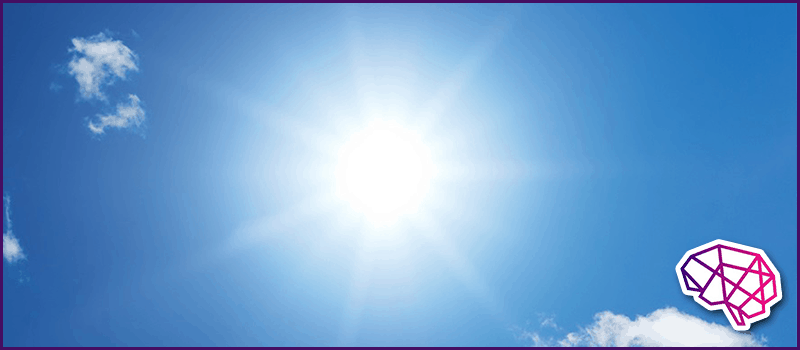
Research has shown that low levels of sun exposure can decrease the levels of mood-enhancing neurotransmitters, such as dopamine, and that higher (or at least adequate) levels of sun exposure can increase them29. Seasonal Affective Disorder – commonly referred to as SAD – is a condition that causes feelings of sadness or depression during winter months when exposure to sunlight is at its lowest.
A study published in 2011 examined the effects of sunlight exposure on 68 healthy adults and discovered that those who had the highest levels of exposure in the previous 30 days had the great density of dopamine receptors in both the movement and reward areas of the brain30.
Of course, even though sunlight can increase dopamine levels, safety guidelines with regard to sunlight exposure must be adhered to, as being exposed for too long might be both addictive and, most importantly, harmful.
Dopamine-boosting Supplements
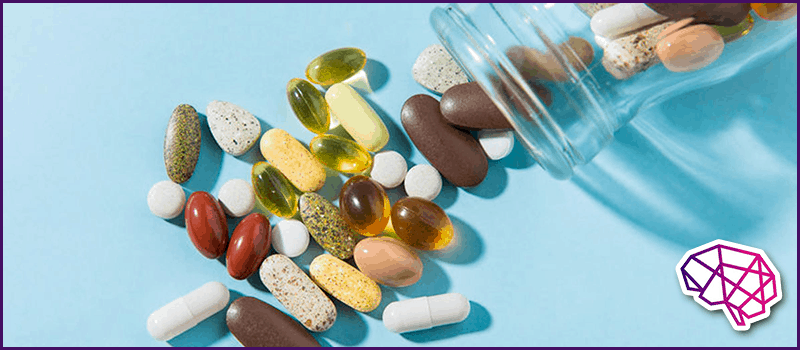
If you’re wondering whether there are any natural supplements that will increase dopamine levels naturally, this section may be of interest to you. At present, the only studies that point to certain supplements boosting dopamine levels are ones that have been conducted on animals; therefore, it is impossible to say whether or not these supplements will have any positive effect on humans. However, if you are interested in the research that has been conducted in certain supplements, such as curcumin, oregano extract, green tea, and vitamin C, you can check out the following studies:
https://pubmed.ncbi.nlm.nih.gov/19059299/
https://pubmed.ncbi.nlm.nih.gov/25719303/
https://pubmed.ncbi.nlm.nih.gov/23625424/
However, your body needs an array of vitamins and minerals in order to create dopamine and release it in sufficient amounts. These include, but are not limited to niacin, folate, iron, and vitamin B631. Therefore, if your body is deficient in any of these vital nutrients, it may struggle to produce adequate levels of dopamine.
Boosting Dopamine Naturally: A Conclusion
There are no two ways about it; dopamine is an essential neurotransmitter that plays a significant role in mood and feelings of motivation and reward – in addition to regulation of body movements.
While your body is adept at controlling the levels of dopamine in your bloodstream and adjusting them accordingly, certain lifestyle and diet changes can help you to optimise (and potentially even maximise) your dopamine levels. Conversely, poor choices where diet and lifestyle are concerned may have the opposite effect; therefore, a healthy diet, rich in vitamins, minerals, probiotics and protein, in conjunction with adequate sleep and exercise are vital to ensuring healthy levels of dopamine – and optimal dopamine response.
Thank you for taking the time to visit our blog; we really do appreciate it a lot! If you’d like to learn more about brain health, cognitive function, nootropics (‘smart drugs’), and everything related to our grey matter, feel free to head over to our homepage and browse our blog posts. Or, alternatively, use the search function if there’s a topic you’re specifically interested in.
If you can’t find information on a specific brain-related topic, get in touch and we’ll try and write a blog post on it!
References:
1. Frank, M.J. (2005). Dynamic Dopamine Modulation in the Basal Ganglia: A Neurocomputational Account of Cognitive Deficits in Medicated and Nonmedicated Parkinsonism. Journal of Cognitive Neuroscience, 17(1), pp.51–72.
2. Arias-Carrión, O. and Pŏppel, E. (2007). Dopamine, learning, and reward-seeking behavior. Acta Neurobiologiae Experimentalis, (online) 67(4), pp.481–488. Available at: https://pubmed.ncbi.nlm.nih.gov/18320725/.
3. Bressan, R.A. and Crippa, J.A. (2005). The role of dopamine in reward and pleasure behaviour–review of data from preclinical research. Acta Psychiatrica Scandinavica. Supplementum, (online) (427), pp.14–21. Available at: https://pubmed.ncbi.nlm.nih.gov/15877719/
4. Chong, T.T.-J. and Husain, M. (2016). The role of dopamine in the pathophysiology and treatment of apathy. Progress in Brain Research, (online) 229, pp.389–426. Available at: https://pubmed.ncbi.nlm.nih.gov/27926449.
5. Colzato, L.S., de Haan, A.M. and Hommel, B. (2014). Food for creativity: tyrosine promotes deep thinking. Psychological Research, 79(5), pp.709–714.
6. Montgomery, A.J., McTavish, S.F.B., Cowen, P.J. and Grasby, P.M. (2003). Reduction of brain dopamine concentration with dietary tyrosine plus phenylalanine depletion: an [11C]raclopride PET study. The American Journal of Psychiatry, (online) 160(10), pp.1887–1889. Available at: https://pubmed.ncbi.nlm.nih.gov/14514507/
7. Davis, J.F., Tracy, A.L., Schurdak, J.D., Tschöp, M.H., Lipton, J.W., Clegg, D.J. and Benoit, S.C. (2008). Exposure to elevated levels of dietary fat attenuates psychostimulant reward and mesolimbic dopamine turnover in the rat. Behavioral neuroscience, (online) 122(6), pp.1257–1263. Available at: https://www.ncbi.nlm.nih.gov/pmc/articles/PMC2597276/
8. Hryhorczuk, C., Florea, M., Rodaros, D., Poirier, I., Daneault, C., Des Rosiers, C., Arvanitogiannis, A., Alquier, T. and Fulton, S. (2016). Dampened Mesolimbic Dopamine Function and Signaling by Saturated but not Monounsaturated Dietary Lipids. Neuropsychopharmacology, (online) 41(3), pp.811–821. Available at: https://www.ncbi.nlm.nih.gov/pmc/articles/PMC4707827/
9. Décarie-Spain, L., Sharma, S., Hryhorczuk, C., Issa-Garcia, V., Barker, P.A., Arbour, N., Alquier, T. and Fulton, S. (2018). Nucleus accumbens inflammation mediates anxiodepressive behavior and compulsive sucrose seeking elicited by saturated dietary fat. Molecular Metabolism, (online) 10, pp.1–13. Available at: https://pubmed.ncbi.nlm.nih.gov/29454579/
10. Eskelinen, M.H., Ngandu, T., Helkala, E., Tuomilehto, J., Nissinen, A., Soininen, H. and Kivipelto, M. (2008). Fat intake at midlife and cognitive impairment later in life: a population‐based CAIDE study. International Journal of Geriatric Psychiatry, 23(7), pp.741–747.
11. Lerner, A., Neidhöfer, S. and Matthias, T. (2017). The Gut Microbiome Feelings of the Brain: A Perspective for Non-Microbiologists. Microorganisms, 5(4), p.66.
12. Ochoa-Repáraz, J. and Kasper, L.H. (2016). The Second Brain: Is the Gut Microbiota a Link Between Obesity and Central Nervous System Disorders? Current Obesity Reports, 5(1), pp.51–64.
13. Cryan, J.F. and Dinan, T.G. (2012). Mind-altering microorganisms: the impact of the gut microbiota on brain and behaviour. Nature Reviews Neuroscience, 13(10), pp.701–712.
14. McKean, J., Naug, H., Nikbakht, E., Amiet, B. and Colson, N. (2017). Probiotics and Subclinical Psychological Symptoms in Healthy Participants: A Systematic Review and Meta-Analysis. Journal of Alternative and Complementary Medicine (New York, N.Y.), (online) 23(4), pp.249–258. Available at: https://pubmed.ncbi.nlm.nih.gov/27841940/
15. Hansen, C.J., Stevens, L.C. and Coast, J.R. (2001). Exercise duration and mood state: how much is enough to feel better? Health psychology : official journal of the Division of Health Psychology, American Psychological Association, (online) 20(4), pp.267–75. Available at: https://www.ncbi.nlm.nih.gov/pubmed/11515738
16. Meeusen, R., Piacentini, M. F., & De Meirleir, K. (2001). Brain microdialysis in exercise research. Sports Medicine (Auckland, N.Z.), 31(14), 965–983. https://doi.org/10.2165/00007256-200131140-00002
17. Wang, G.J., Volkow, N.D., Fowler, J.S., Franceschi, D., Logan, J., Pappas, N.R., Wong, C.T. and Netusil, N. (2000). PET studies of the effects of aerobic exercise on human striatal dopamine release. Journal of Nuclear Medicine: Official Publication, Society of Nuclear Medicine, (online) 41(8), pp.1352–1356. Available at: https://pubmed.ncbi.nlm.nih.gov/10945526/
18. Pal, R., Singh, S.N., Chatterjee, A. and Saha, M. (2014). Age-related changes in cardiovascular system, autonomic functions, and levels of BDNF of healthy active males: role of yogic practice. AGE, 36(4).
19. Petzinger, G.M., Holschneider, D.P., Fisher, B.E., McEwen, S., Kintz, N., Halliday, M., Toy, W., Walsh, J.W., Beeler, J. and Jakowec, M.W. (2015). The Effects of Exercise on Dopamine Neurotransmission in Parkinson’s Disease: Targeting Neuroplasticity to Modulate Basal Ganglia Circuitry. Brain Plasticity, 1(1), pp.29–39.
20. Volkow, N.D., Tomasi, D., Wang, G.-J., Telang, F., Fowler, J.S., Logan, J., Benveniste, H., Kim, R., Thanos, P.K. and Ferre, S. (2012). Evidence That Sleep Deprivation Downregulates Dopamine D2R in Ventral Striatum in the Human Brain. Journal of Neuroscience, (online) 32(19), pp.6711–6717. Available at: https://www.jneurosci.org/content/32/19/6711
21. Volkow, N.D., Wang, G.-J., Kollins, S.H., Wigal, T.L., Newcorn, J.H., Telang, F., Fowler, J.S., Zhu, W., Logan, J., Ma, Y., Pradhan, K., Wong, C. and Swanson, J.M. (2009). Evaluating Dopamine Reward Pathway in ADHD. JAMA, 302(10), p.1084.
22. Hirshkowitz, M., Whiton, K., Albert, S. M., Alessi, C., Bruni, O., DonCarlos, L., … Ware, J. C. (2015). National Sleep Foundation’s updated sleep duration recommendations: final report. Sleep Health, 1(4), 233–243. https://doi.org/10.1016/j.sleh.2015.10.004
23. Koelsch, S. (2014). Brain correlates of music-evoked emotions. Nature Reviews Neuroscience, (online) 15(3), pp.170–180. Available at: http://www.stefan-koelsch.de/papers/koelsch_2014_brain_music_emotion.pdf
24. Salimpoor, V.N., Benovoy, M., Larcher, K., Dagher, A. and Zatorre, R.J. (2011). Anatomically distinct dopamine release during anticipation and experience of peak emotion to music. Nature Neuroscience, 14(2), pp.257–262.
25. Bernatzky, G., Bernatzky, P., Hesse, H.-P., Staffen, W. and Ladurner, G. (2004). Stimulating music increases motor coordination in patients afflicted with Morbus Parkinson. Neuroscience Letters, (online) 361(1–3), pp.4–8. Available at: https://www.ncbi.nlm.nih.gov/pubmed/15135879
26. Edwards, M.K. and Loprinzi, P.D. (2017). Comparative effects of meditation and exercise on physical and psychosocial health outcomes: a review of randomized controlled trials. Postgraduate Medicine, 130(2), pp.222–228.
27. Kjaer, T.W., Bertelsen, C., Piccini, P., Brooks, D., Alving, J. and Lou, H.C. (2002). Increased dopamine tone during meditation-induced change of consciousness. Cognitive Brain Research, (online) 13(2), pp.255–259. Available at: https://bit.ly/2Nml9mp
28. Tang, Y.-Y., Ma, Y., Fan, Y., Feng, H., Wang, J., Feng, S., Lu, Q., Hu, B., Lin, Y., Li, J., Zhang, Y., Wang, Y., Zhou, L. and Fan, M. (2009). Central and autonomic nervous system interaction is altered by short-term meditation. Proceedings of the National Academy of Sciences of the United States of America, (online) 106(22), pp.8865–8870. Available at: https://www.ncbi.nlm.nih.gov/pmc/articles/PMC2690030/
29. Sohn, C.-H. and Lam, R.W. (2005). Update on the biology of seasonal affective disorder. CNS spectrums, (online) 10(8), pp.635–646; quiz 1–14. Available at: https://pubmed.ncbi.nlm.nih.gov/16041295/
30. Tsai, H.-Y., Chen, K.C., Yang, Y.K., Chen, P.S., Yeh, T.L., Chiu, N.T. and Lee, I.H. (2011). Sunshine-exposure variation of human striatal dopamine D2/D3 receptor availability in healthy volunteers. Progress in Neuro-Psychopharmacology and Biological Psychiatry, 35(1), pp.107–110.
31. Wakade, C. and Chong, R. (2014). A novel treatment target for Parkinson’s disease. Journal of the Neurological Sciences, (online) 347(1–2), pp.34–38. Available at: https://pubmed.ncbi.nlm.nih.gov/25455298/